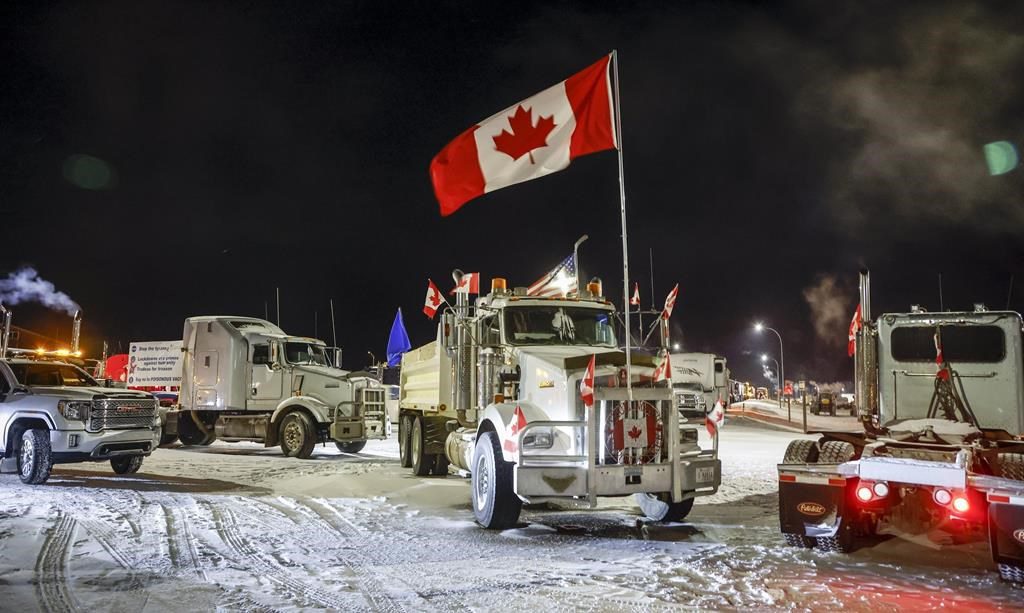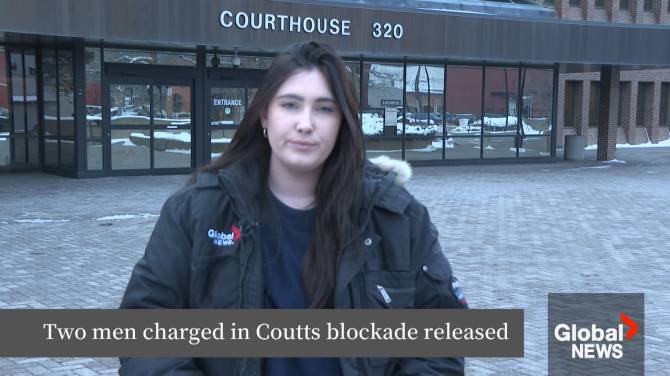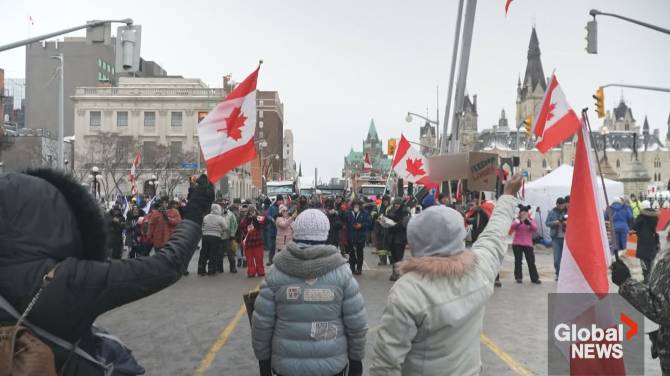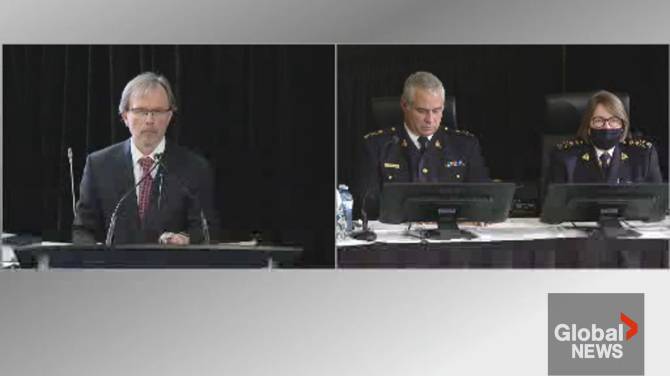After conducting an internal review, the RCMP found that some officers at the scene of an Alberta blockade were not aware of threats to harm police until after the episode ended during the 'Freedom Convoy' protests.
The report also mentioned disordered efforts in early 2022 to mobilize officers in Ottawa, lack of proper equipment, insufficient training, poor intelligence co-ordination, and exceptionally long working days that led some Mounties to sleep in their offices.
Furthermore, the review indicates that the federal government's insistence on receiving hourly briefings during the unrest left no time for intelligence units to prepare an assessment or gather the most current information.
The Access to Information Act was utilized by The Canadian Press to obtain the 92-page national after-action review, a part of Project Natterjack following the convoy.
The review contains the findings of a survey of 1,641 RCMP personnel involved in the response to the 2022 protests that paralyzed downtown Ottawa and congested important border points.
In late January and early February 2022, protesters, many in large rigs, inundated the national capital.
Initially portrayed as a demonstration against COVID-19 health measures, the gathering attracted individuals with various grievances against Prime Minister Justin Trudeau and his government.
Meanwhile, the protests expanded, and trucks congested border crossings, including crucial routes to the United States at Windsor, Ont., and Coutts, Alta.
At Coutts, firearms, ammunition, and tactical vests were discovered in trailers by the RCMP. Additionally, an alleged conspiracy to murder RCMP officers was uncovered.
The after-action report revealed that some personnel at Coutts were not aware of the threats to police officers until after the blockade ended. Others mentioned that they only became aware of the threats through media coverage.
The review report expressed concern for officer safety, stating that all front-line members must receive briefings prior to deployment, including information about possible threats to life.
In Ottawa, the influx of people, including some with ties to the far-right movement, led to the temporary closure of many businesses. Residents reported loud truck horns, diesel fumes, and harassing behavior.
Public frustration grew over the lack of enforcement action by Ottawa police. Officers from various forces, including the RCMP, gradually arrived to help clear the streets.
The review indicated that the process to deploy RCMP officers in the national capital was described as chaotic because there were not enough personnel trained and knowledgeable in effective mobilization and scheduling.
Interviewees also mentioned that it was challenging to gather sufficient RCMP officers to assist the Ottawa police because the deployment was optional, rather than a mandatory requirement.
The report says that National Headquarters employees were asked if they wanted to help Ottawa Police Service through 'call out' emails specifically.
The events happened during the peak of the COVID-19 pandemic, which made it even harder to find officers due to sickness.
It was hard to gather the right number of marked police cars and equipment for deployed officers because Mounties at headquarters usually do not do front-line policing and so are not equipped like a regular detachment.
This resulted in a limited supply of use-of-force equipment such as carbine rifles, Tasers, and pepper spray.
The survey respondents expressed a need for more and better-quality cold-weather items like jackets, gloves, boots, and balaclavas, as well as public-order gear such as shields and helmets.
Some struggled to access reliable communication tools, including police radios, batteries, and radio holders for belts. Personnel also said they needed more computer equipment, better-quality internet connections, and software for open-source intelligence collection.
General duty RCMP members who are not part of tactical support groups or public order units have little to no public order or tactical training, and there was no training on crowd-control tactics provided before the convoy events, the report says.
In some cases, there was no planning or inconsistent direction from leaders on what to do or what the desired outcome should be.
The report adds that there is a need for improvements in training to ensure that members are prepared to be deployed for all kinds of events.
The Ottawa training facility at the former headquarters was unusable due to poor air quality, causing employees to experience physical discomfort. This led to the cancellation of training courses and a backlog of members with expired certification.
The poor air quality resulted in the cancellation of five recertification training courses, leading to a backlog of members with expired certification. The report says that if the issue is not resolved, the RCMP will not be able to provide additional policing support in the National Capital Region.
Interviewees pointed out a lack of intelligence coordination within the RCMP during the convoy events, resulting in duplicated efforts. Some attributed the confusion to the absence of an effective governance structure for the RCMP's intelligence program.
Nearly 40 per cent of survey respondents disagreed that decisions made by RCMP management were well communicated within the organization during the convoy events.
Intelligence practitioners worked long hours without breaks, sometimes producing updates hourly, or daily, depending on the team, the report says.
During the convoy events, front-line members reported working very long hours, not including travel time to distant lodgings. Some even set up temporary beds in their offices and slept there, the report adds.
Police officers were subjected to verbal abuse and constant loud noises during the protests. Some supervisors checked in with staff to see if they needed breaks, but there were few mental health supports available otherwise.
However, the British Columbia division of the RCMP assigned a member to oversee the well-being of deployed officers, both mentally and physically.
The RCMP has created a resource guide for employees and their families, and they are doing a long-term study to examine the development of stress injuries among members, according to the report.
In a statement, the RCMP explained that the after-action review aims to capture best practices and lessons learned for future use.
The force is going over the many recommendations from the review, but some have already been evaluated because they align with those from the Public Order Emergency Commission and the Mass Casualty Commission. These looked into the convoy events and the 2020 killings in Nova Scotia, as per the statement.
The RCMP’s reform, accountability, and culture sector is leading the efforts to carry out the recommendations, ensuring that they match with the ongoing work from the respective reports and inquiries.
Eric Slinn, a retired RCMP assistant commissioner who was part of the Natterjack team, mentioned in the after-action report that while changes have been made in planning, communication, and response to public order events, there is still a need to adapt and implement standardized, seamless, and interoperable responses to effectively ensure the safety and security of Canadians, and maintain their trust and confidence.
“However, these important changes should not only rely on the will of RCMP leaders, but should also come with the support of appropriate legislative changes and increased investment from the government,” said Slinn.






